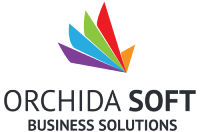
Integrate with Fatoora Portal
The Kingdom of Saudi Arabia (KSA) has set out a two-phase plan to implement e-invoicing, overseen by the Zakat, Tax and Customs Authority (ZATCA). This initiative applies to all resident taxpayers within KSA, with the exception of non-residents for VAT purposes
Phase 1 of e-invoicing was rolled out by ZATCA in Saudi Arabia on December 4, 2021, followed by the announcement of Phase 2. For Phase 2, businesses with a turnover exceeding SAR 3 billion in 2021 were mandated to implement e-invoicing starting January 1, 2023
Comprehending the regulations of Phase 2, particularly the integration phase, is crucial for taxpayers to ensure compliance. Under Phase 2, businesses are required to integrate their POS/accounting systems with ZATCA’s system for the clearance of tax invoices and related Credit and Debit Notes (CDNs), as well as for reporting simplified tax invoices and related CDNs
This article elucidates the process of integrating with the Fatoora portal as the Phase 2 implementation deadline approaches
ZATCA has announced several waves under Phase 2 of Saudi Arabia’s e-invoicing scheme. Businesses registered under KSA VAT, with turnovers exceeding certain thresholds during 2021 or 2022, are allocated to specific waves, each with its integration deadline
: Here’s an overview of the waves announced by ZATCA
Wave 9: Businesses with turnovers exceeding SAR 30 million fall under this category, mandated to integrate with ZATCA’s Fatoora portal by June 1, 2024. Wave 8: Businesses with turnovers exceeding SAR 40 million must integrate by March 1, 2024. Wave 7: Businesses with turnovers exceeding SAR 50 million must integrate by February 1, 2024. Wave 6: Businesses with turnovers exceeding SAR 70 million must integrate by January 1, 2024. Wave 5: Businesses with turnovers exceeding SAR 100 million must integrate by December 1, 2023. Wave 4: Businesses with turnovers between SAR 150 million and SAR 250 million must integrate by November 1, 2023. Wave 3: Businesses with turnovers between SAR 250 million and SAR 500 million must integrate by October 1, 2023. Wave 2: Businesses with turnovers between SAR 500 million and SAR 3 billion must integrate by July 1, 2023.
Before selecting an integration mode, several factors need to be considered, including internet connectivity stability, the type and volume of invoices, ERP and POS system architecture, network security policies, and the number of VAT registrations
Various integration methods are available for Phase 2 compliance, including direct API integration, SFTP-based integration, DB-based integration, POS integration, Excel upload, and UI-based e-invoicing
Integrating multiple ERP/POS systems with ZATCA can be complex, particularly for businesses operating across diverse sectors. Adopting a unified solution. such as Orchida e-Invoicing software, streamlines the integration process and ensures compliance with Phase 2 requirements
Here’s a step-by-step guide to integrating multiple ERP/POS systems with Fatoora Portal
1: Identify all ERP, custom billing solutions, cash registers, and cloud-based POS systems across your business units.
2: Register the necessary devices to facilitate seamless interaction with ZATCA across all business units.
3: Share invoice data from identified ERP/POS systems with the Orchida Cloud Platform, which offers features like data validation, e-Invoice data enrichment, and ZATCA interaction.
4: The Orchida Cloud Platform generates XML files according to ZATCA specifications and shares them with the Fatoora portal for clearance or reporting.
5: The Fatoora portal validates invoices and returns them with cryptographic stamps and QR codes if applicable.
6: The Orchida Cloud Platform shares invoices in PDF/A-3 format with connected ERP/POS systems for further use.
By following these steps, businesses can seamlessly integrate multiple ERP/POS systems with ZATCA, ensuring compliance with Phase 2 e-invoicing regulations in Saudi Arabia.
